
The Bill of Rights ratified on December 15, 1791
The Bill of Rights ratified: On December 15, 1791, the new United States of America ratified the Bill of Rights, the first ten amendments to the Constitution of the United States, confirming the fundamental rights of its citizens. The First Amendment guarantees freedom of religion, speech, and the press, and the rights of peaceful assembly and petition. Other amendments guarantee the rights of the people to form a “well-regulated militia”, to keep and bear arms, the rights to private property, fair treatment for accused criminals, protection from unreasonable search and seizure, freedom from self-incrimination, a speedy and impartial jury trial, and representation by counsel.
THE Conventions of a number of the States, having at the time of adopting the Constitution, expressed a desire, in order to prevent misconstruction or abuse of its powers, that further declaratory and restrictive clauses should be added: And as extending the ground of public confidence in the Government will best insure the beneficent ends of its institution.
The Preamble to The Bill of Rights. [Providence]: Printed by Bennett Wheeler, [1789]. Documents from the Continental Congress and Constitutional Convention, 1774 to 1789. Rare Book & Special Collections Division

The Bill of Rights The Bill of Rights. Photograph shows reproduction of original Bill of Rights, [between ca. 1920 and ca. 1930]. Prints & Photographs Division
The Bill of Rights draws influence and inspiration from the Magna Carta (1215), the English Bill of Rights (1689), and various later efforts in England and America to expand fundamental rights. George Mason’s Virginia Declaration of Rights formed the basis of the amendments that comprise the Bill of Rights.
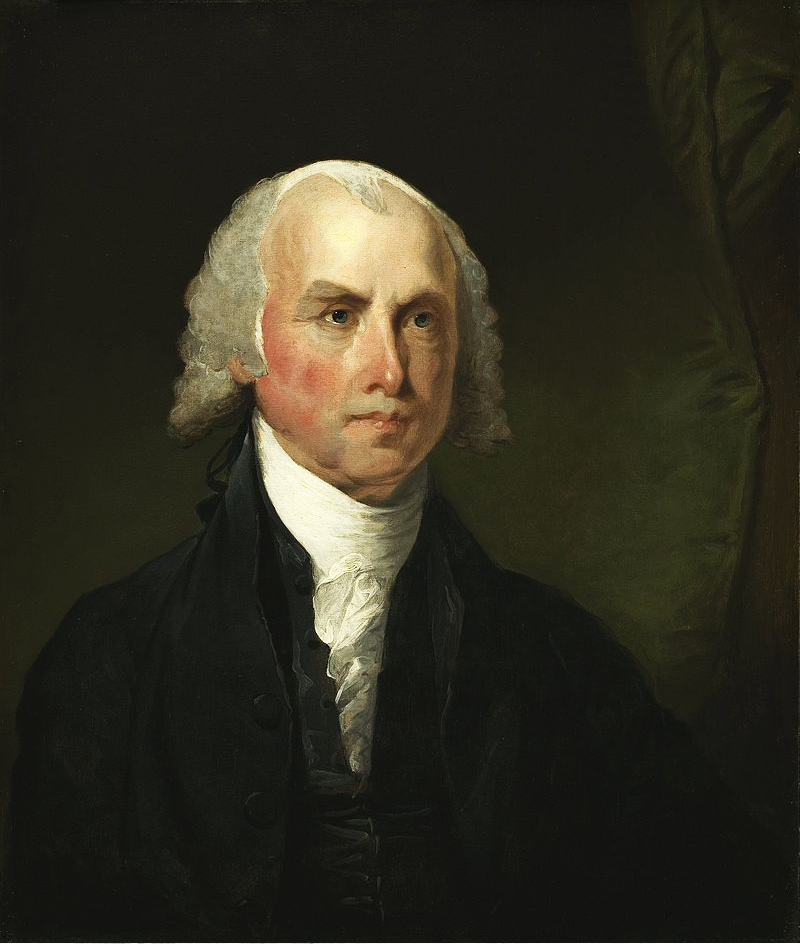
Portrait of James Madison c. 1821, by Gilbert Stuart
Mason (1725-92), a native of Fairfax County, Virginia, championed individual liberties throughout his life. In 1776, he drafted the Virginia Declaration of Rights and a large part of Virginia’s state constitution. In 1787, as one of the most vocal members of the Constitutional Convention, Mason expressed great concern that assurances of individual liberties had not been incorporated into the Constitution, and, due to this concern and others, he elected not to sign the document.
The Bill of Rights answered Mason’s greatest concern and the concerns of many ratifying states. As a representative in the First Federal Congress, James Madison ushered seventeen amendments to the Constitution through the House of Representatives. These amendments were subsequently reduced to the twelve amendments passed by Congress and sent to the states on September 25, 1789. The first two proposed amendments, concerning the number of constituents for each representative and the compensation of members of Congress, were not ratified. By December 15, 1791, articles three through twelve were ratified by the required number of states and became known as the Bill of Rights.
The application of the rights enumerated in the first ten amendments to the Constitution frequently fosters contention. The United States Supreme Court is entrusted with the power to void acts of Congress that it finds to be in conflict with the Constitution or specifically with the Bill of Rights when the constitutionality of the acts arises in litigation. Thus, the amendments are frequently reinterpreted in fresh contexts and changing times.
Library Of Congress / Wikipedia / Encyclopedia Britannica / National Archives.gov / Cornell Law School.edu
/ University of Missouri-Kansas City - School of Law.edu / History.com
/ The Bill of Rights ratified on December 15, 1791 (YouTube) 
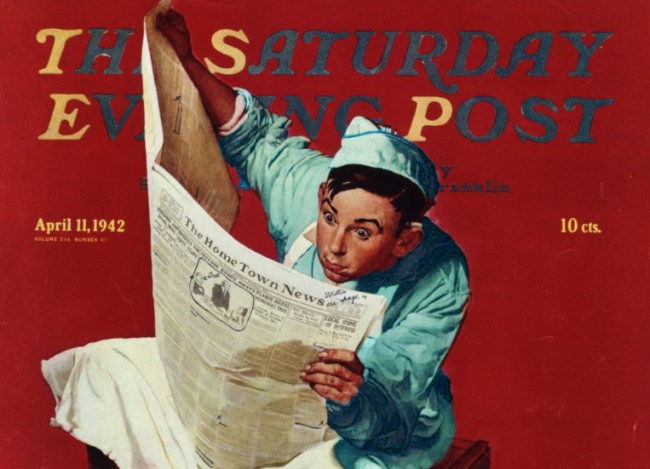
Understanding Military Terminology
National System for Geospatial Intelligence
(DOD) The combination of technology, policies, capabilities, doctrine, activities, people, data, and organizations necessary to produce geospatial intelligence in an integrated, multi-intelligence environment.
Also called NSG.
Joint Publications (JP 2-03) Geospatial Intelligence in Joint Operations - Joint Chiefs of Staff
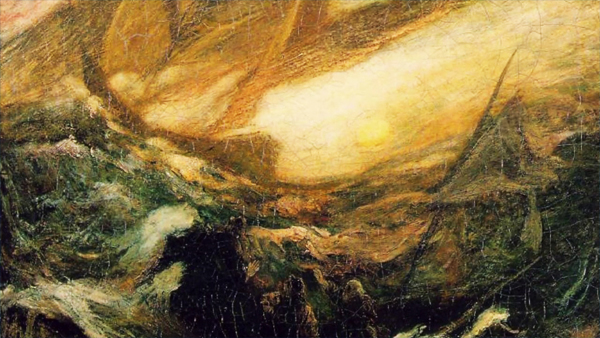
The Old Salt’s Corner
“Tales of Legendary Ghost Ships”
Legend of the Fireship of Baie des Chaleurs
The most common explanation of what ship haunts the area involves two 16th century Portuguese explorers and traders, Gaspar Cort-Real and his brother Miguel, who were seeing a profit trading trinkets with the locals, decided that trading of the locals was a better deal. They invited a group of natives aboard, got them liquored up, chained them below deck and took them back to Portugal to be sold as slaves.
The year following the kidnappings, Gaspar Cort-Real returned to the area for a new load but a welcome wagon of nasty was out to greet him. The locals tied Gaspar to a rock at low tied and had a picnic while watching the rising waters slowly take his life. When Miguel returned to Chaleur to find his overdue brother, he was happy to see Gaspar’s ship at anchor in the bay. When he and his men boarded the ship the locals, who had laid in waiting, attacked Miguel’s men. In a desperate attempt to flee, Miguel set the ship ablaze and vowed, with his last breath that his spirit would roam the Bay of Chaleur “for a thousand years”.
The night was gloomy and dark with a heavy sleet falling and bitter cold wind blowing. The river was many feet above normal, only the tops of the trees growing on the low banks showing above the water. Then came the alarming cry of fire. This cry was screamingly repeated when one person after another made the horrible discovery that the boat was afire. There was an immediate panic.
Another story involved the Battle of Restigouche. The Battle of Restigouche was a naval battle fought during the French and Indian War of 1760 between elements of the British Royal Navy and the small flotilla of French Navy vessels sent to relieve New France after the fall of Quebec. It marked the end of any serious attempt by France to keep hold of their colonies in North America, and it severely curtailed any hopes for a lengthy resistance to the British by the French forces that remained. The carnage on both sides of the naval battle almost ensured that some poor soul would get lost and wander the Bay for an eternity.
Another story is also told of a virgin bride who was abducted and ravaged by a visiting ship’s crew. In retribution for this dastardly act, the culprits found their ship engulfed in flames and their souls doomed to forever sail the waters of Chaleur Bay aboard the fiery vessel.
There are less fanciful explanations of the phenomenon of course. Some believe it is a combination of escaping gases, atmospheric conditions, and changing currents. Local historian W. F. Ganong suggested it was a version of St. Elmo’s Fire.
Who knows the truth? It doesn’t matter, really. Never let facts get in the way of a good story.
Mysteries of Canada
/ Wikipedia

“I’m Just Sayin”
“Almost all absurdity of conduct arises from the imitation of those whom we cannot resemble.”
“Great works are performed not by strength but by perseverance..”
“Revenge is an act of passion;
avengeance of justice.
Injuries are revenged;
crimes are avenged.”
~ Samuel Johnson

“Thought for the Day”
“The secret of happiness is to admire without desiring.”
“You’re never too important
to not be nice.”
“Don’t compare your life to others.
There’s no comparison
between the sun and the moon.
They shine when it’s their time.”
~ William Shakespeare

“What I Learned”
“People who know the least always argue the most.”
“Criticism is the disapproval of people,
not for having faults, but having faults different from your own.”
“You are today where your thoughts have brought you;
you will be tomorrow where your thoughts take you.
You cannot escape the results of your thoughts.”
~ Anonymous

Second Hand News (Links to Articles from Week 50 - December 09, 2019 - December 15, 2019)
 ANALYSIS: Narratives to clash as Justice Department Inspector General Michael Horowitz Foreign Intelligence Surveillance Act (FISA) report and Democratic Impeachment Hearing set for Monday
• Joe Biden says son Hunter will not engage in foreign business if he wins 2020 race
• 'Open-ended criteria:' Dershowitz says next Democratic president will be impeached
ANALYSIS: Narratives to clash as Justice Department Inspector General Michael Horowitz Foreign Intelligence Surveillance Act (FISA) report and Democratic Impeachment Hearing set for Monday
• Joe Biden says son Hunter will not engage in foreign business if he wins 2020 race
• 'Open-ended criteria:' Dershowitz says next Democratic president will be impeached
NATO allies warn France: Don't undermine Ukraine in upcoming summit with Russia
• Six Saudis detained in connection to Pensacola shooting after being caught filming the attack
• 'I was there; he was not': Hungarian official says Democratic impeachment witness George Kent not credible
House Intelligence Committee Chairman Adam Schiff spied on the top Republican on his panel by obtaining his phone records and publishing them in an impeachment report
• Biden: ‘Nobody warned me’ about Hunter because Beau was dying
• Former Obama aide: Republicans ‘should be burnt to the ground’
Washington Examiner
 Military bases across the U.S are put on high alert as FBI hunts missing Saudi servicemen linked to Pensacola shooting and probes shooter's trip to New York two days before as terror investigators are called in
• Third Pensacola shooting victim is named as 'kind-hearted' naval apprentice after two other victims are identified and hailed heroes who 'saved countless lives'
• “We were bleeding out:” Airman struck by bullets during Pensacola Naval base attack relives harrowing moment he jumped in front of a female colleague to protect her
Military bases across the U.S are put on high alert as FBI hunts missing Saudi servicemen linked to Pensacola shooting and probes shooter's trip to New York two days before as terror investigators are called in
• Third Pensacola shooting victim is named as 'kind-hearted' naval apprentice after two other victims are identified and hailed heroes who 'saved countless lives'
• “We were bleeding out:” Airman struck by bullets during Pensacola Naval base attack relives harrowing moment he jumped in front of a female colleague to protect her
Last survivor of the USS Arizona that was sunk at Pearl Harbor is laid to rest with his crew-mates as divers take his ashes down to the ship and veterans gather on the anniversary of tragedy
• Two remaining soldiers identified after pilot is named in fatal Black Hawk helicopter crash that collided into a tree line in a Minnesota farm field
• Alabama police officer is shot dead by suspect during a drug bust 41 years after his cop father was also killed in the line of duty
North Korea carries out 'very significant' test at satellite launch site just hours after it said denuclearization talks with the U.S. were off the negotiating table
• From Hitler's top hat, shirt and telephone to his mistress Eva Braun's knickers... GUY WALTERS on the shameful and dangerous booming trade in Third Reich trophies
• Holocaust survivor watched starving prisoners 'roast and eat a dead child' during time in five death camps before getting his revenge on 'cruel' guards years later as a Nazi hunter
Daily Mail UK
 CORRUPTION CHRONICLES: Pelosi/Schiff Abuse Worsens, FBI “Finds” Clinton Emails, Five NEW Judicial Watch Lawsuits against Deep State
CORRUPTION CHRONICLES: Pelosi/Schiff Abuse Worsens, FBI “Finds” Clinton Emails, Five NEW Judicial Watch Lawsuits against Deep State
“Investigating the Investigators:” Judicial Watch: Court Rejects FBI Effort to Keep Secret Records about FBI-Clinton Lawyer Meeting on Russia
Pelosi-Schiff Coup Attack on Trump is also an Attack on YOU & Our Constitutional Republic!
Impeachment, Department of Justice (DOJ) / Office of Inspector General (OIG) Report & New Open Society Foundations Reports
Judicial Watch Sues for Documents Related to Former Ukraine Ambassador Marie Yovanovitch’s Alleged Intervention with Ukraine Prosecutor
Judicial Watch
 The Impeachers Lose the Country.
The Impeachers Lose the Country.

Mrs Pelosi’s wracking emotional strain.

Trump Foreign Policy confronts Iran, China, North Korea.

Hezbollah missiles and drones threaten Northern Israel from the Golan.

Evo Morales narcoterrorist shelters in Mexican cartel.
 John Batchelor (12/09/2019)
John Batchelor (12/09/2019)

Mr. Answer Man Please Tell Us: Do We Actually Know What Shakespeare Looked Like?
“The aim of art is to present not the outward appearance of things, but their inner significance; for this, not the external manner and detail, constitutes true reality.” ˜ Aristotle
William Shakespeare (1564–1616) is the most famous playwright in history, though ironically, we know very little about his life and perhaps even less about what he really looked like.
There are two main reasons for this.
Firstly (and very obviously), Shakespeare lived before the time of photography. Therefore any painterly depictions of him must be taken with a pinch of salt. On top of this, the many paintings that have been identified to be Shakespeare were simply false or misattributed.
Secondly, it is important to note that historically, artists didn't intend to capture the exact 'likeness' of their sitters. To convey the subject's wealth and status, or even their 'inner essence' from the unique perspective of the artist was deemed more important than accurately capturing their physiognomy.
We delve into Art UK's collection to ponder over the many presumed portrayals of Britain's most-loved writer, “The Bard”.
Sutherland Gower Portrait

This oil on copper portrait is also known as the 'Sutherland Gower Portrait of William Shakespeare': Painted around 1590, this is one of the earliest depictions of a man presumed to be Shakespeare (although it has not been officially identified as Shakespeare).
The Grafton Portrait

There is no evidence that this portrait represents Shakespeare, but throughout the twentieth century the painting had numerous champions expressing the hope that it did so. The main reason for this attention is the original inscription that records the sitter's age as 24 in 1588, making him an exact contemporary of Shakespeare. The portrait depicts a rather beautiful youth with curly brown hair and grey eyes, wearing a sumptuous slashed scarlet doublet painted in such a way as to depict silk or satin. Some have suggested the clothing was too refined for an actor of the day.
The Chandos Portrait

The 'Chandos Portrait' (1600–1610) can be found in the National Portrait Gallery and is probably the most famous depiction of Shakespeare as well as the most likely to be a legitimate likeness. It is believed to have been painted by John Taylor (1585–1651) and served as the basis for the engraving of Shakespeare by Martin Droeshout (1601–1650) used in the First Folio (1623).
Named after the Dukes of Chandos who formerly owned the painting, it was bequeathed to The National Gallery in 1856, as one of the first works in its collection. It is believed that the painting was also once owned by playwright Sir William Davenant (1606–1668), who according to some chroniclers, was an illegitimate son of the playwright.
The Cobbe Portrait

The 'Chandos Portrait' (1600–1610) can be found in the National Portrait Gallery and is probably the most famous depiction of Shakespeare as well as the most likely to be a legitimate likeness. It is believed to have been painted by John Taylor (1585–1651) and served as the basis for the engraving of Shakespeare by Martin Droeshout (1601–1650) used in the First Folio (1623).
Named after the Dukes of Chandos who formerly owned the painting, it was bequeathed to The National Gallery in 1856, as one of the first works in its collection. It is believed that the painting was also once owned by playwright Sir William Davenant (1606–1668), who according to some chroniclers, was an illegitimate son of the playwright.
This Jacobean era portrait painted around 1610 is believed to be of Shakespeare. The original version of the painting was found in the Cobbe family's collection in 2006, and shortly after many scholars claimed it was a true likeness of the playwright. The work had originally belonged to the family of Henry Wriothesley (1573–1624), one of Shakespeare's most important patrons.
However other scholars have claimed the portrait is of Sir Thomas Overbury (1581–1613), an English poet and essayist.
The Chesterfield Portrait

Known as 'The Chesterfield Portrait' because it was once owned by the Earl of Chesterfield, this portrait has been attributed to the Dutch painter Pieter Borsselaer (1664–1687) circa 1679 (decades after the death of Shakespeare).
The Flower Portrait

Declared to be a forgery in 2005, the 'Flower Portrait' was for centuries believed to be an accurate portrayal of Shakespeare. Originally believed to be painted in 1609 (according to its signed date), it was in fact, painted in the nineteenth century. It was clearly inspired by Droeshout's engraving of Shakespeare that appeared in the First Folio.
More than 400 years after his death, Shakespeare's true identity still stirs debate. For the time being, a few secondhand images are the best clues we have to what he looked like. Luckily, his written work survives in far fuller fashion.
Art UK.or
• BBC
• Daily Mail UK
• Play Goer.org
• Quara
• Wikipedia
• Do We Actually Know What Shakespeare Looked Like? (YouTube Search) 

NAVSPEAK aka U.S. Navy Slang
Hollywood Shower: To take a long shower that wastes water (See Navy Shower). It is permissible to take one when a ship is pierside connected to pier water and sewer, if no one else is waiting for the shower.
Holy stone: The stone or the act of using one. A pumice stone for cleaning a wooden deck. The name derives from the sailor stating that “anything that would cause a seasoned sailor to bend his knees, and curse the name of his maker must surely be holy”, or from the hole in the center for inserting a handle.
Honch: (“the Honch”) Entertainment district just outside the main gate of Yokosuka Naval Base. Famous for masagi girls, karaoke and Kirin beer.
Honey-ko: A reference to a male sailor or his “girlfriend” for the evening. It is expected that the sailor will not have another “girlfriend” that same evening and not get caught with another on a subsequent evening. Used primarily at the former Subic Bay and Clark bases in the Philippines. “Cheating” was not allowed, and some how would be found out quickly by means of the “honey-ko telegraph”.
Hooch:
(1) A living environment, such as a tent, made more comfortable by innovation.
(2) Illicit homemade alcohol.
Hooligan Navy: WWII Navy pejorative for the Coast Guard, from its flexibility in enlisting men discharged from other services to rapidly expand for Prohibition. (Term endures within CG.)
Hot Footed: Carefully placing matches under the toenails of a sleeping shipmate and then lighting them all at the same time, after which the perpetrator(s) immediately hide or attempt to look innocent, leaving the victim to wonder what asshole did this to him.
Hoover: The S-3B Viking, mostly due to its unique engine noises.
Horse Cock: Large log of baloney or overcooked kielbasa usually put out for lunch or midrats. Horse Cock sandwich is one of the least favorite boxed lunches served to helo crews when visiting other ships.
Wiktionary.org

Just for you MARINE
HEDP Humanitarian Daily Ration, a variation of the Meal, Ready-to-Eat (MRE) used to feed a single malnourished person for one day with 2,300 calories.
Hershey Bars: Black leather dress shoes that required regular polishing. Thrown out by most Marines after boot camp and replaced with corfams.
Hidin' and Slidin': Pejorative backronym for H&S (Headquarters and Service) companies. Also “Hotdogs and Soda”.
High and Tight: Nickname for a common variant of the buzz cut, where the hair is clipped very close. Although having become heavily associated with Marines (giving rise to the term “jarhead”), it's generally not the most common or preferred haircut worn among most Fleet Marines. Also referred to as a “High reg(ular)”.
Higher-ups: Nickname for Marines above the rank of E-5 Sergeant.
High-speed: New, interesting, or cool; often used to sarcastically denote that the subject looks good, but performance is dubious.
Hillbilly Armor: Improvised vehicle armour.
HIMARS: High Mobility Artillery Rocket System.
Hippity-hop, mob stop!: Used in place of “Platoon, halt!” by a drill instructor displeased with a platoon's drill performance.
HMMWV or Humvee: High-Mobility Multi-purpose Wheeled Vehicle, common utility vehicle.
Wikipedia.org
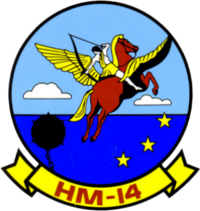
Naval Aviation Squadron Nicknames
HM-14 Helicopter Mine Countermeasures Squadron 14 (HM-14) - nicknamed the “Vanguard”
United States Navy - Naval Air Station - Naval Air Station Norfolk, Virginia: May 12, 1978 - Present.

Where Did That Saying Come From?

“The fat is in the fire:”
Meaning: The fat is in the fire' is used to express the opinion that a plan has gone irretrievably wrong, because of some calamity.
History: This proverbial saying is first found in John Heywood's 1546 glossary A dialogue conteinyng the nomber in effect of all the prouerbes in the englishe tongue:
“Nowe if we awarde me this wydowe to wedde,
And that I dryue of tyme, tyll tyme she be dedde:
Than farewell ryches, the fat is in the fyre.
And neuer shall I to lyke riches aspire.”
In the above line Heywood was referring to the choice between marriage or wealth and that, if he chose marriage, then 'farewell riches'.
Phrases.org UK

Science & Technology

How Komodo dragons survive deadly bites from other Komodos
• Deforestation in the Amazon is shooting up, but Brazil’s president calls the data ‘a lie’
• Poop transplants can help prematurely old mice live longer
• Newly discovered exoplanet trio could unravel the mysteries of super-Earth formation
• This rock-eating ‘worm’ could change the course of rivers
• To feed its 1.4 billion, China bets big on genome editing of crops
Science AAAS

Bizarre News (we couldn’t make up stuff this good - real news story)
Mysterious Radiation Cloud Over Europe Traced to Secret Russian Nuclear Accident

A vast cloud of nuclear radiation that spreadover continental Europe in 2017 has been traced to an unacknowledged nuclear accident in southern Russia, according to an international team of scientists.
The experts say the cloud of radiation detected over Europe in late September 2017 could only have been caused by a nuclear fuel-reprocessing accident at the Mayak Production Association, a nuclear facility in the Chelyabinsk region of the Ural Mountains in Russia, sometime between noon on September 26 and noon on September 27.
Russia confirmed that a cloud of nuclear radiation was detected over the Urals at the time, but the country never acknowledged any responsibility for a radiation leak, nor has it ever admitted that a nuclear accident took place at Mayak in 2017. [Top 10 Greatest Explosions Ever]
The lead author of the new research, nuclear chemist Georg Steinhauser of Leibniz University in Hanover, Germany, said that more than 1,300 atmospheric measurements from around the world showed that between 250 and 400 terabecquerels of radioactive ruthenium-106 had been released during that time.
Ruthenium-106 is a radioactive isotope of ruthenium, meaning that it has a different number of neutrons in its nucleus than the naturally occurring element has. The isotope can be produced as a byproduct during nuclear fission of uranium-235 atoms.
Although the resulting cloud of nuclear radiation was diluted enough that it caused no harm to people beneath it, the total radioactivity was between 30 and 100 times the level of radiation released after the Fukushima accident in Japan in 2011, Steinhauser told Live Science.
The research was published today (July 29) in the journal Proceedings of the National Academy of Sciences.
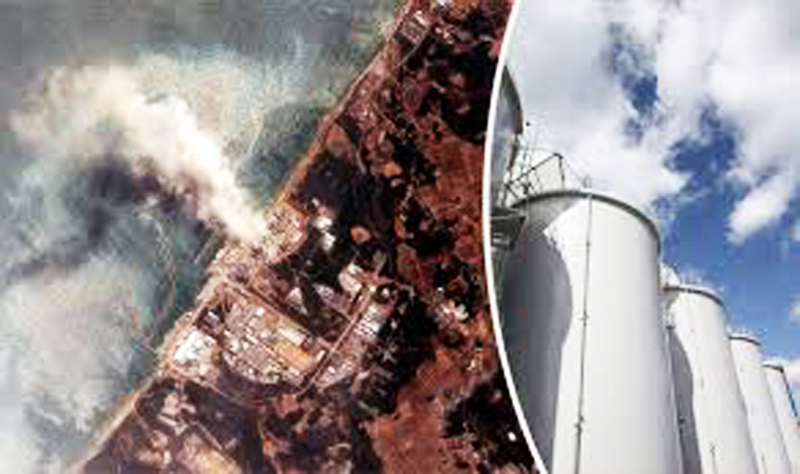
Ruthenium release
The cloud of radiation in September 2017 was detected in central and eastern Europe, Asia, the Arabian Peninsula and even the Caribbean.
Only radioactive ruthenium-106 - a byproduct of nuclear fission, with a half-life of 374 days - was detected in the cloud - Steinhauser said.
During the reprocessing of nuclear fuel — when radioactive plutonium and uranium are separated from spent nuclear fuel from nuclear power reactors - ruthenium-106 is typically separated out and placed into long-term storage with other radioactive waste byproducts, he said.
That meant that any massive release of ruthenium could only come from an accident during nuclear fuel reprocessing; and the Mayak facility was one of only a few places in the world that carries out that sort of reprocessing, he said.
Advanced meteorological studies made as part of this new research showed that the radiation cloud could only have come from the Mayak facility in Russia. “They have done a very thorough analysis and they have pinned down Mayak - there is no doubt about it”, he said.
The accident came a little more than 60 years since a nuclear accident at Mayak in 1957 caused one of the largest releases of radiation in the region's history, second only to the 1986 explosion and fire at the Chernobyl nuclear power plant, which is now in the Ukraine. [Chernobyl Nuclear Disaster 25 Years Later (Infographic)]
In the 1957 accident, known as the Kyshtym disaster after a nearby town, a tank of liquid nuclear waste at the Mayak facility exploded, spreading radioactive particles over the site and causing a radioactive plume of smoke that stretched for hundreds of miles.
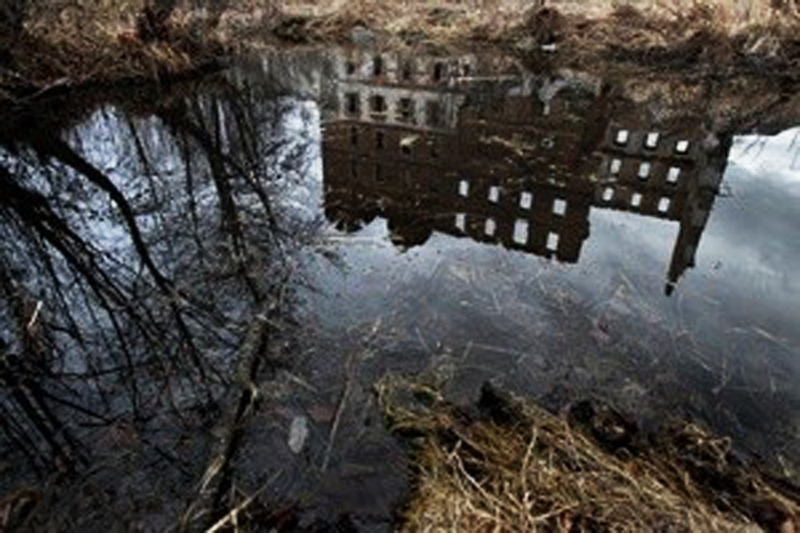
Nuclear accident
The study showed that the 2017 accident at Mayak was unlikely to have been caused by a relatively simple release of radioactive gas, Steinhauser said. Rather, a fire, or even an explosion, might have exposed workers at the plant to harmful levels of radiation, he added.
Russia has not acknowledged that any accident occurred at the Mayak facility, maybe because plutonium is made there for thermonuclear weapons. However, Russia had established a commission to investigate the radioactive cloud, Steinhauser said.
The Russian commission ruled that there was not enough evidence to determine if a nuclear accident was responsible for the cloud. But Steinhauser and his team hope it may look again at this decision in the light of the new research.
“They came to the conclusion that they need more data”, he said. “And so we feel like, okay, now you can have all of our data — but we would like to see yours as well.”
Any information from Russia about an accident at the Mayak facility would help scientists refine their research, instead of having to rely only on measurements of radioactivity from around the world, Steinhauser said.
The international team of scientists involved are keenly interested in learning more about its causes.
“When everybody else is concerned, we are almost cheering for joy, because we have something to measure”, he said. “But it is our responsibility to learn from this accident. This is not about blaming Russia, but it is about learning our lessons”, he said.
• Images: Chernobyl, Frozen in Time
• 15 Secretive Places You Can Now See on Google Earth (And 3 You Can't)
• Lessons From 10 of the Worst Engineering Disasters in U.S. History
Live Science (07/29/2019) 


SONG FACTS
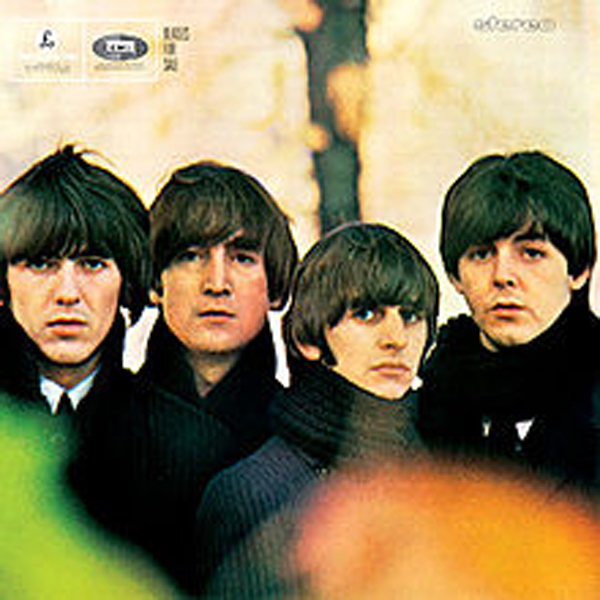
“No Reply” - The Beatles
Album: Beatles For Sale
Released 1964 
This was one of John Lennon's first songs to tell a complete story. The boy knocks on his girl's door, knows she is home because he sees her in the window, but she does not answer. Lennon wrote the song when he was inspired by the song “Silhouettes”  .
.
He said, “I had that image of walking down the street and seeing her silhouetted in the window and not answering the phone.”
Music publisher Dick James told Lennon that it was the first “complete” song that John had ever written: It had a beginning and an end.
This song starts with a vocal, which was rare for the time.
This was yet another early Beatles song originally written for another artist. “No Reply” was written for Tommy Quickly, another Liverpudlian who was also signed to Beatles manager Brian Epstein. Quickly never recorded and released the song, so the Beatles used it themselves. Quickly's story rapidly deteriorated; he had a number of singles that failed to chart, then one minor hit, “Wild Side of Life”  , before fading back into obscurity. This Mersey Beat article seems to indicate that he just wasn't cut out for the spotlight.
, before fading back into obscurity. This Mersey Beat article seems to indicate that he just wasn't cut out for the spotlight.
Lennon was asked about this song shortly before he died in 1980. He replied:
“I had that image of walking down the street and seeing her silhouetted in the window and not answering the phone, although I never called a girl in my life because phones weren't part of the English child's life.”
That's record producer George Martin tickling the ivories. Meanwhile, on the demo version, Ringo was absent from the recording session; he was laid up with tonsillitis and pharyngitis. Jimmie Nicol might have done the drum work here, since he was also drafted to replace Ringo on their upcoming tour. Ringo was back at his station by the time this album version was recorded.
This song's demo recording was lost due to a filing error, then found again by 1993 and re-released on “Anthology 1”  .
.
Rosanne Cash published a two-page article titled “My Favorite Beatles Song”. In it, she talked about “No Reply”, a song that she's been listening to since she was 10 years old. Cash explained that the song mirrored her own relationship with her parents, including country music icon Johnny Cash.
Cash wrote,
“The subtext of my own life was the same as the one in 'No Reply;' I knocked on my parents' door and no one answered. My mother and father were not at home. Just like the song: 'When I came to your door - No reply.'”
She added:
“Lennon's howl that he 'nearly died' is the denoument of the emotional arc”.
Cash goes on,
“He says it twice in the second verse. It has the stark intensity of Hank Williams' line, 'I'm so lonesome I could cry.' Or my dad singing 'I walk the line': plaintive to the point of transcending the meaning. The life that shows up in the voice is made of choices.”
She finishes her piece by saying,
“I've returned to 'No Reply' in every stage of my life... I love the girl who cheated. I love the boy who had his heart broken. I love myself as I was on both sides of the door. The sequence of events is switched, however: I nearly died, then I saw the light. But I'm still reaching for 'No Reply.'”
The Beatles, official site (The Official Top 50 biggest selling Beatles singles revealed) / Rock & Roll Hall of Fame / Billboard / All Music / Song Facts / Ultimate Classic Rock / Wikipedia
Image: “Beatles For Sale (album)” by The Beatles
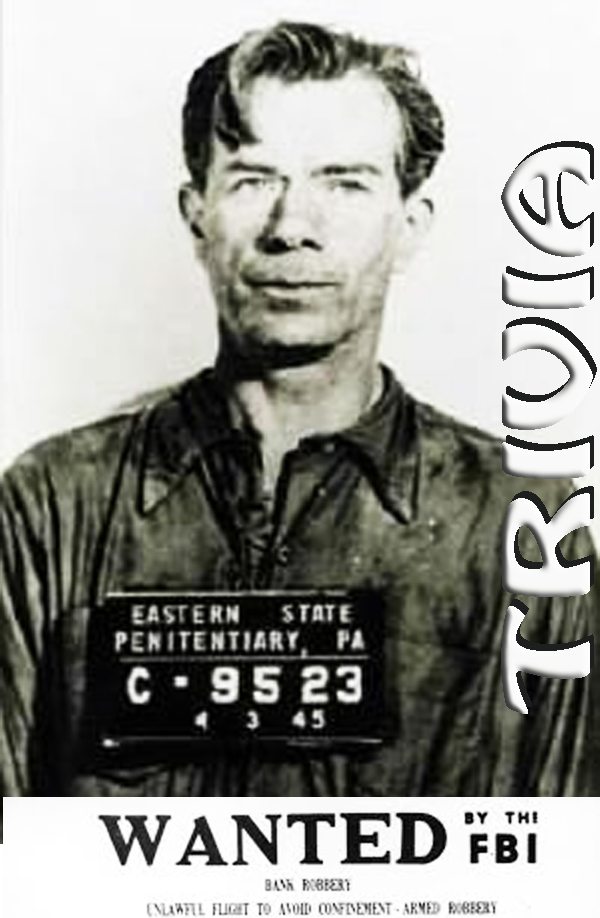
Trivia
● In the 1930's, when asked why he robbed banks, Willie Sutton replied, “Because that's...” what?
Answer to Trivia
● The statement, "The right of citizens to vote shall not be denied because of sex" became a part of the U.S. Constitution in what year? Was it 1787 when the constitution was written, or as an amendment in 1865, 1920, or 1945?
Answer to Trivia
● Around the time of the first World War, all the countries along the Mediterranean coast of Northern Africa were controlled by France or Great Britain, except for Libya, which was controlled by which other European nation?
Answer to Trivia
● According to ancient and medieval philosophy, after the four elements of earth, air, fire, and water, the fifth and highest essence, thought to be the substance of the heavenly bodies and all things, was called by what essential name?
Answer to Trivia

A Test for People Who Know Everything
From the Jeopardy Archives Category - “WEATHER IDIOMS” ($200)
“Stated otherwise, this metaphor might be “pouring down Manx & Affenpinschers”.”
● Answer for People Who Do Not Know Everything, or Want to Verify Their Answer Library Of Congress
From the Jeopardy Archives Category - “WEATHER IDIOMS” ($400)
“Standing in the relative peace of the beach, you'd experience this idiom of impending turmoil.”
● Answer for People Who Do Not Know Everything, or Want to Verify Their Answer Science How Stuff Works
From the Jeopardy Archives Category - “WEATHER IDIOMS” ($1,000)
“To take attention from another; it literally happened to a guy who came up with a stage audio effect.”
● Answer for People Who Do Not Know Everything, or Want to Verify Their Answer Phrases.org UK
Answer to Last Week's Test
From the Jeopardy Archives Category - “PICK A PLANET” ($200)
“In ancient Greece it was called Apollo.”
● Answer: Testify against himself. Ancient History Encyclopedia EU
From the Jeopardy Archives Category - “PICK A PLANET” ($600)
“You'll spot its symbol.”
● Answer: A Warrant. Ancient History Encyclopedia EU
From the Jeopardy Archives Category - “PICK A PLANET” ($1,000)
“The Babylonians associated it with the goddess Ishtar.”
● Answer: Bail. Ancient History Encyclopedia EU

Joke of the Day
“Take Your Kid To Work Day”

Take Your Kid To Work Day
An 8 year old girl went to the office with her father on 'Take your kid to work Day'.
As they walked round the office she started crying and getting cranky.
Her father asked what was wrong.
As the staff gathered round she sobbed loudly, “Daddy, where are all the clowns you said you worked with?”








































